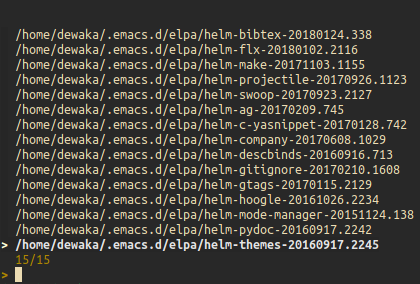Changing working directories is one of the most common operations you do while working on the command line. While tab completion can help make path completion more efficient, it is still a chore to do things manually, especially when moving back and forth between commonly worked on project locations.
fasd is a tools which can help improve the efficiency of navigating the file system. Fasd tool is a shell tool which integrates with shells to remember directories and files you have worked on recectly. Think of fasd as keeping a MRU cache of files and directories you have worked on.
With fasd integration, it is possible to jump back to a directory you have worked on previously with a few keystrokes with the power of fuzzy matching. Same goes for files.
Refer to fasd project for full documentation regarding installation. Fasd is available for installation on most Linux distributions through system packages, and macOS through Homebrew and Macports.
Combining fasd with fzf
You can make fasd integration even more powerful by combining a fuzzy filter tool, such as fzf through piping.
Following are some of the most useful and oft-used utility functions which I have defined for use in Zsh terminal, and these should work in the same way for Bash as well.
Recently used directories
Following function helps changing back into most recently used directories.
# cd into recent directories
zd() {
local dir
dir="$(fasd -Rdl "$1" | fzf -1 -0 --no-sort +m)" && cd "${dir}" || return 1
}
Since this is going to be a very common use case, you can set an easy to use alias as follows,
# j: jump to directories
alias j=zd
Above function will directly jump to the directory if you invoke it with an argument which results in an unambiguous match. Otherwise, fzf prompt will be displayed for filtering through possible matches, as shown below.
# jump to recenty worked directory starting with word helm
> zd helm

Recently used files
Following bash function gives you a quick way to filter through your most recently used files and open them in your default editor.
# View recent f files
v() {
local file
file="$(fasd -Rfl "$1" | fzf -1 -0 --no-sort +m)" && $EDITOR "${file}" || return 1
}
Sometimes you remember a file you worked on but not the directory containing it , which can be a common occurrence when you have multiple projects. Following function ~cd~ into the directory of the project containing the file selected based on fasd filtering through fzf.
# cd into the directory containing a recently used file
vd() {
local dir
local file
file="$(fasd -Rfl "$1" | fzf -1 -0 --no-sort +m)" && dir=$(dirname "$file") && cd "$dir"
}
There are other utility functions which can be developed based on fasd and fzf, some of which are given in the fzf wiki.